Unveiling the Mysteries of the Desert: A Journey Through Time and Sand
Table of Contents
Introduction
Deserts have long been in the human imagination. Stretching from large sandy dunes to surreal oases, deserts are a realm of extremes. Deserts seem barren upon first glance but are truly full of life, history, and mystery. For centuries, deserts have hosted ancient civilizations, sacred pilgrimages, and intrepid explorers. This journey through time and sand unfolds the mysteries of these arid wonders-from the geological forces that shape them to the legends and cultures that thrive within them.

What is it about deserts that captures our imagination?
Do it the vast horizon of dunes stretching out, the stories of ancient traders crossing some vast desolate wasteland, or the rich biological diversity hidden in dry lands? Let’s take a journey into discovering the science, history, and cultural significance of deserts across the world.
Characteristics of Deserts What Makes a Desert ?
Deserts are areas whose rainfall stands below 25 centimeters (10 inches) a year. However, they are considered to be the driest places on Earth. Still, deserts are not composed entirely of sand. They can be quite varied and have many different shapes and forms. They can even be cold, or so hot that they can braise an ant. Yet they all share their wetness. Even so, deserts are critical areas in the planet’s ecosystem, influencing climate patterns and providing unique habitats for flora and fauna.

Types of Deserts: Hot, Cold, Coastal, and Rain Shadow Deserts
Hot Deserts These are the Sahara and the Arabian deserts wherein, during the day, the temperature exceeds 40°C (104°F).
Cold Deserts There are the Gobi Desert and parts of Antarctica where freezing temperatures dominate.
Coastal Deserts A perfect example is the Atacama Desert in Chile, wherein cold ocean currents limit precipitation.
Rain Shadow Deserts: These occur on the leeside of mountain ranges, for example, the Great Basin Desert in the U.S., which receives wet air blocked from reaching the desert by mountains.
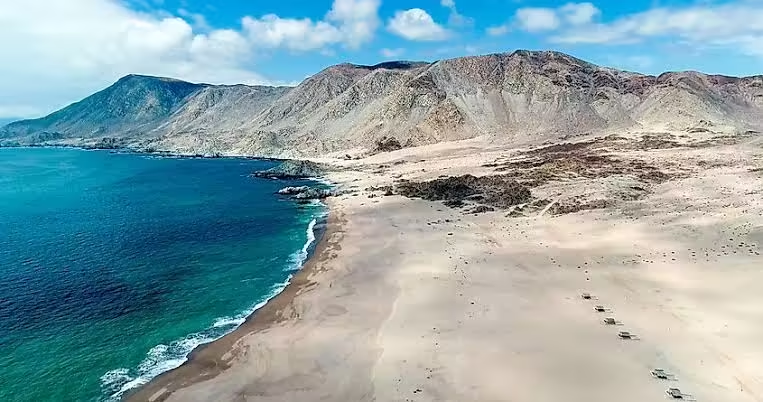
A Brief History of Desert Formation
Geological Processes that Create Deserts
Deserts are made historical landscapes in millions of years of geological processes. Contributing factors for the world’s deserts include tectonic shifts, wind erosion, and drought. The forces of time take their toll on the powerful winds carving humongous dunes, while the isolated rainfalls shape the canyons and ravines.

Wind, Water, and Time: Carvers of Sand
In the hot desert, strong winds constantly move sands across vast expanses, forming the famous dunes we associate with the desert. In the cold deserts, glaciers can also shape the landscape by leaving behind barren, rocky plains.
Notable Desert Landforms: Dunes, Oases, and Salt Flats
Dunes Huge towering mounds of sand, formed by the wind, like those in Namibia’s Namib Desert.
Oases: Areas where water surfaces, sometimes forming vital stops for both travelers and wildlife.
Salt Flats: Ancient lakes have evaporated away, leaving salt pans or plains, like Bolivia’s Salar de Uyuni
Life in the Desert

Desert Flora Adaptations
Interestingly, desert regions are not devoid of living things. The greater part of plants has adapted to survive with almost no water. Examples include succulents such as cacti, which store water in their thickened stems while the rest are desert grasses that close down during dry periods.
Survival Strategies of Desert Fauna
Animals have made extraordinary adaptations for survival in deserts. The fennec fox, for instance, spends the day sleeping to avoid excessive heat, while other animals, like the camel, can store in their humps fat for days without water and food.
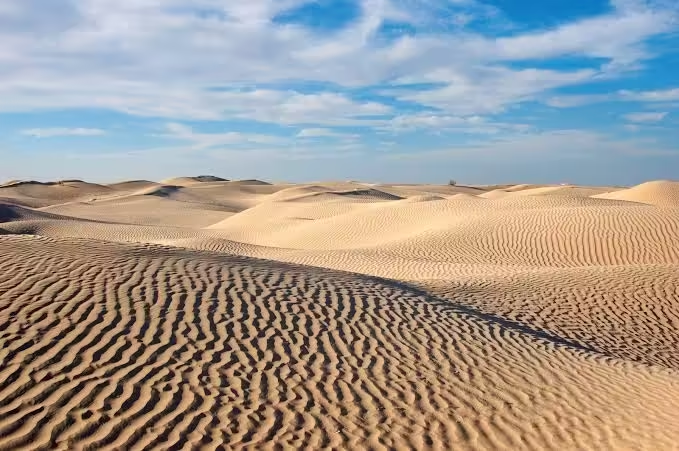
Examples of Iconic Desert Species
Cactus: These are found throughout every desert on Earth. The spines reduce water loss.
Camel: As “ships of the desert,” camels are especially well suited for desert safaris over long distances of sand dunes.
Fennec Fox: A small, nocturnal desert-dwelling fox with rather large ears that aid in dissipation of heat.

Ancient Civilisations of the Desert
Egyptian Civilisation Along the Nile
The deserts surrounding the Nile River protected and isolated this great civilization while the Nile gave life to ancient Egypt. Egyptian Desert was both a source of wealth, quarries supplying stone for pyramids, and a barrier against invasion.
Mesopotamian Desert Kingdoms
Early man civilization lived in the midst of the desert between rivers Tigris and Euphrates. The deserts posed a challenge yet opportunity to the early people, who formed irrigation techniques to bring water into their arid lands.
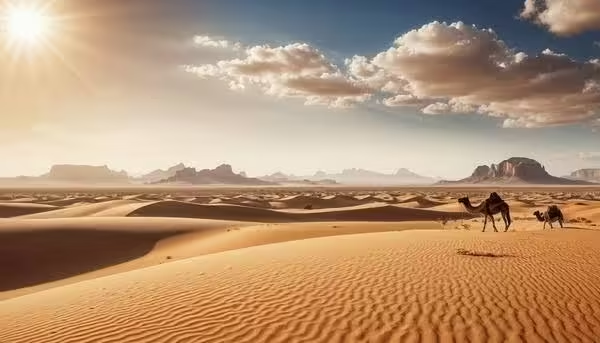
The Mysterious Nabataeans of Petra
The Nabataeans, who prospered in what is now Jordan, overcame the desert’s adversities to build the magnificent city of Petra. Chiseled into sandstone escarpments, Petra remains as an outstanding testament to their ingenuity in extracting valuable water supplies through their elaborate networks of irrigation.
Deserts’ Roles in Myth and Folklore
Ancient Egyptian Desert Myths
In Egyptian mythology, the desert was associated with Set, god of chaos, indicating danger and the unknown. The desert landscape was considered a presentation of untamed nature forces.

Arabian Folktales of the Desert
Arabian folklores abound in tales of desert spirits, djinn, and mirages. These stories represent the fear and respect with which desert people held towards this hostile and inhospitable environment where survival was literally a daily struggle.
The American Southwest: Stories of the Native Americans and their Myths
The Navajo and the Hopi, among many others, have spent thousands of years telling stories of gods and spirits that live on the sands of the American Southwest. These stories point to the requirement that man must be balanced with nature in order to define them.
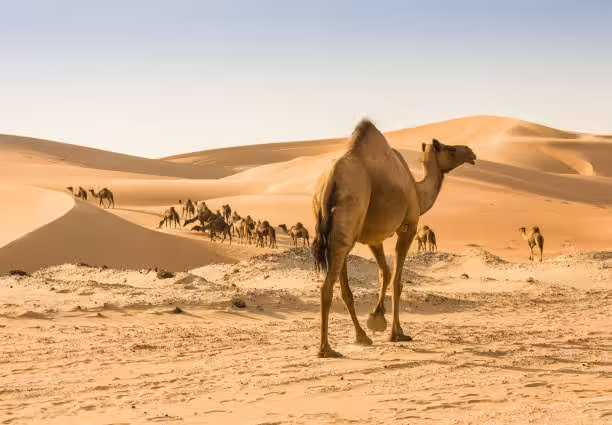
The Deserts of Human History: A Cultural Approach
Deserts as Trade Routes: The Silk Road and the Trans-Saharan Trade
Deserts were not obstacles; they also established some of the world’s key trading route junctions. The Silk Road passed over the Gobi Desert, and the Sahara Desert caravan routes had existed across it that lead from Africa into Europe and Asia.
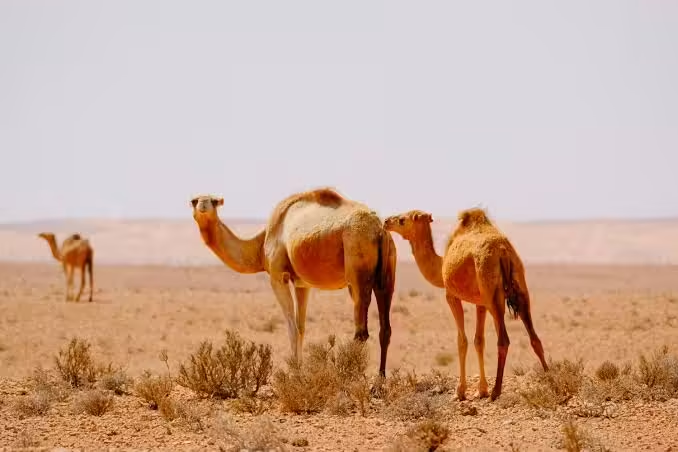
Spirituality and the Desert: Desert Monks and Ascetics
Deserts have appealed to spiritual seekers for centuries by virtue of the many cenuries of isolation. Egyptian desert monks continued the tradition by having themselves buried in the sandy dunes and devoted their whole lives to solitary seclusion in order to perfect their devotion in secret. For most religions, the desert is still a place of purification and testing.
Nomadic Tribes and the Desert Relationship :
Nomads, like the Bedouins, inhabit this desert for thousands of years, moving with the seasons with the goal of finding water and grazing for their animals. It is in this regard that they have been able to thrive in conditions that would be hostile to most other people.
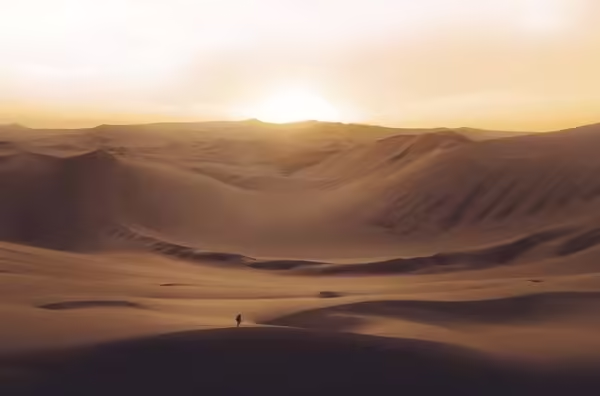
Modern Deserts: Challenges and Opportunities
Desertification: Causes and Effects
Desertification refers to the transformation of productive land into desert conditions. Overgrazing, deforestation, and climatic change are major contributors to this phenomenon. Desertification puts ecosystems in danger at a local scale. At the same time, however, it affects the livelihood of millions worldwide.
Human Impact on Desert Ecosystems
Desert environments continue to suffer from the impacts of urbanization, mining, and agricultural activities. This, in turn causes variation in these fragile systems, thus readily advancing towards biodiversity extinction and land degradation.

Future of Desert Solar Farms and Renewable Energies
The deserts, despite the challenges, offer vast potential for renewable energy. Desert solar farms emerge as a key solution to the world’s energy needs, where places like the Mojave Desert in California are paving their way forward in the solar power generation race.
The Mystery of the Sahara Desert
The Largest Hot Desert in the World
The Sahara spreads over North Africa and spans, respectively, the width of the United States. It is, after all, a land of extremes: its temperatures reach more than 50°C (122°F), and sand dunes tower hundreds of feet.
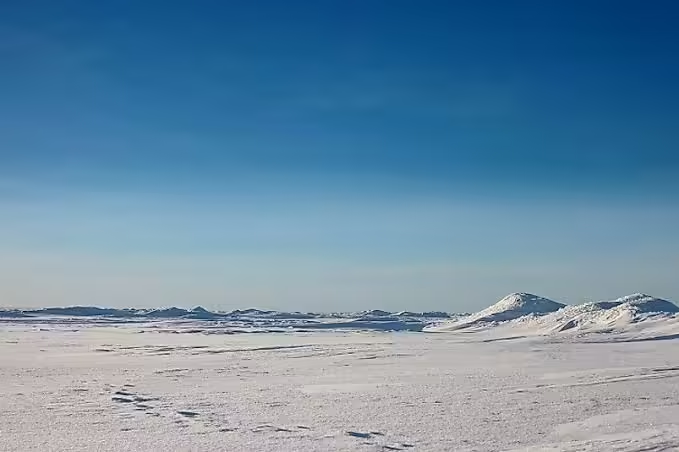
Ancient History Buried in the Sands
The Sahara was never a desert. Thousands of years ago, it was a beautiful green place with lakes and rivers. New fossil discoveries and artwork suggests early man thrived here before climate change.
Role of the Sahara in Climate Patterns
The Sahara desert is the Earth’s greatest climatic tool. Dust picked up by winds in the Sahara crosses the Atlantic, fertilizing the Amazonian rain forests, and continues to shape the weather around the Americas.
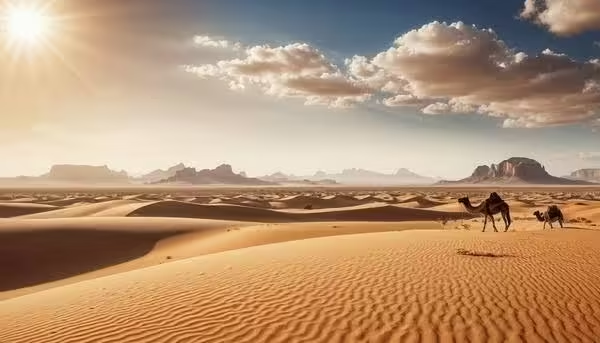
Atacama: The Deepest Desert Mystery
The Driest Place on Earth
The Atacama Desert, which occupies a large area in Chile, is so arid in some regions that it receives less than one millimeter of rainfall per year. Yet, it is surprising to find life everywhere, from resilient cacti in one end to flamingos in another – perhaps in its salt flats.
A Center of Scientific Explorations
Its clear skies and minimal light pollution make the Atacama one of the best places on earth to do astronomy. The European Southern Observatory has set up many telescopes here, which peer deep into space.

Surviving Extreme Aridity
Most life today is found in water. It might therefore appear surprising that a treasure trove of living microorganisms could thrive in the hyper-arid desert of the Atacama. Yet there they were, vastly outnumbering anything like them reported previously found anywhere in the environment. Microorganisms here revealed scientists’ insight into how it may be possible for life to exist on Mars, under such extreme arid conditions.
The Antarctic Desert: The Coldest Desert
An Ice Desert: Unique Characteristics of Antarctica
Though ice covers the entire surface of Antarctica, it is technically a desert because of its minuscule precipitation levels. It is characterized by a landscape which no other place known on Earth, whether a glacier, ice shelves, and mountains; all are covered with miles of ice.
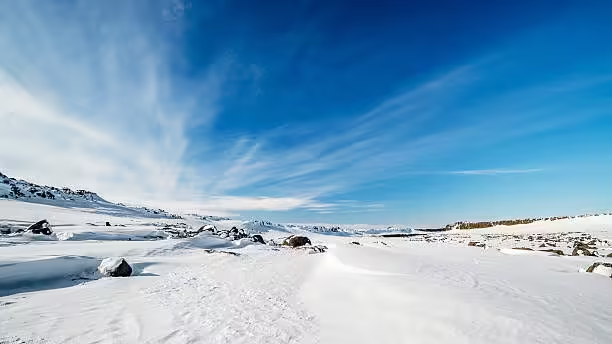
Climate Change and Its Impact on Antarctica
As a result of heightened warming in climate, the ice sheets in Antarctica melt in unprecedented velocities, and their melting pushes the sea levels sky rocketing. Scientists are working to understand the full implications of this melt and the changes it will impose on global climate patterns.
The Role of Antarctica in Earth’s Future
There’s precious information behind the ice that covers Antarctica as regards Earth’s past climate. The ancient records that are being looked into might help the scientists predict changes and build strategies to fight global warming.

Art in the Desert and Self-Expression
Art of the Native and Rock Painting
From ancient rock carvings and petroglyphs in Australia’s Outback or the American Southwest, deserts are a canvas for human expression.

Desert Photography and Its Appeal
The beautiful harshness of the deserts has inspired so many photographers to take the pictures of playing lights and shadow across these vast open landscapes. The still, silent isolation of the desert invites reflection and creativity.
Modern Artistic Expressions Inspired by Deserts
Land art installations such as “The Desert Breath” at Egypt or the Burning Man temporary art city in the Nevada desert have inspired modern artists inspired by these isolated and dramatic landscapes.
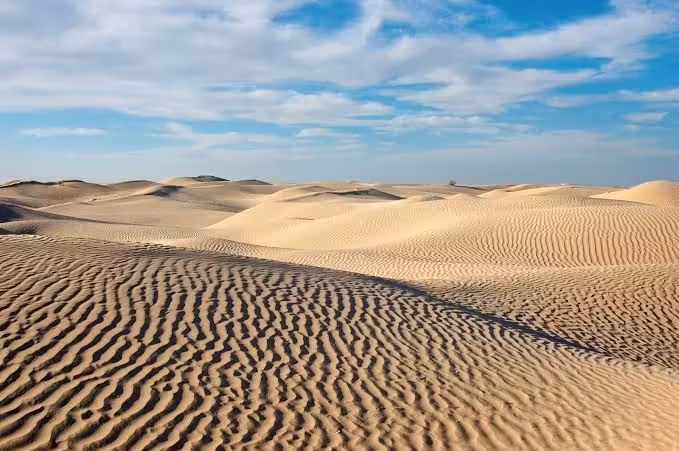
Tourism in Deserts: An Otherworldly Experience
Desert Safari Adventures
Whether it’s across the Sahara on dunes of camelback miles or dunes of Dubai on a 4×4, desert safaris are simply a very exciting way to take in the drama and majesty of these fabulous landscapes.
Stargazing in the Desert: Natural Observatory
Due to the fact that light pollution is often minimal in these areas, it happens to be one of the best places to stargaze for viewing the bountiful Milky Way, among other phenomena of the universe, making nights in the desert unforgettable.
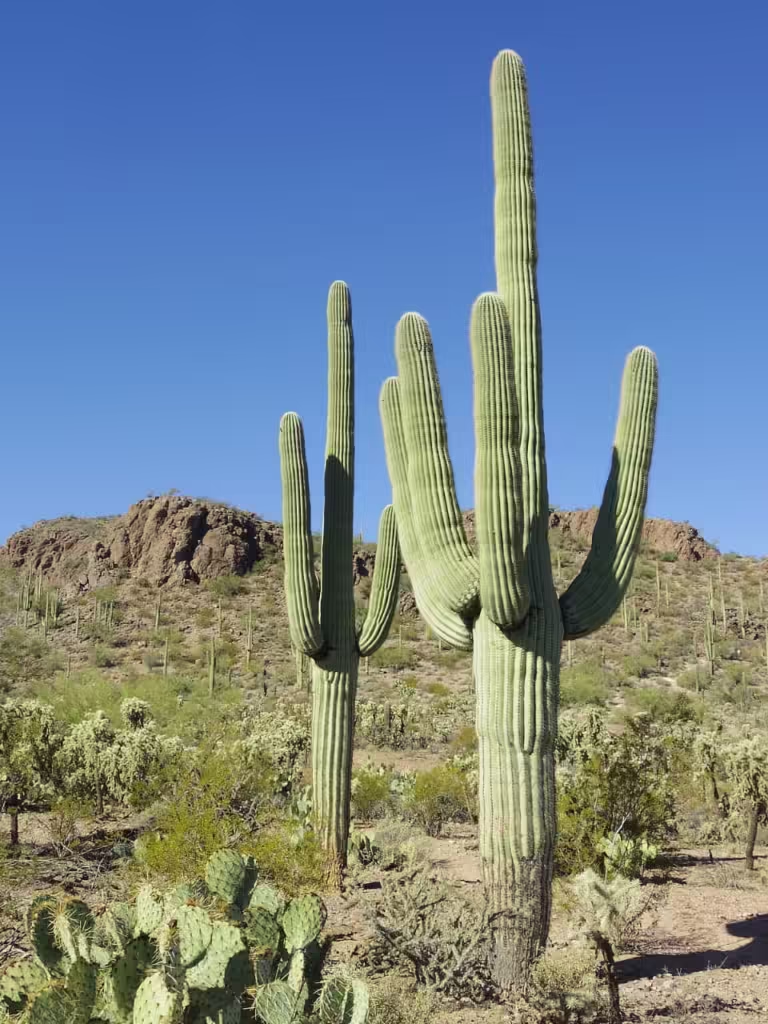
The Growth of Desert Eco-Tourism
Desert eco-tourism is expanding, and tourists are now looking for sustainable ways of exploring such fragile ecosystems. Guided tours with the local tribes are among the initiatives educating the tourist while conserving the environment.
The Future of Deserts
How Deserts Are Expanding (Desertification)
With climate change on the rise and bad land management practices, deserts continue to expand massively. Desertification is expanding deserts at a fast rate, risking ecosystem destruction and agricultural loss and human settlement.
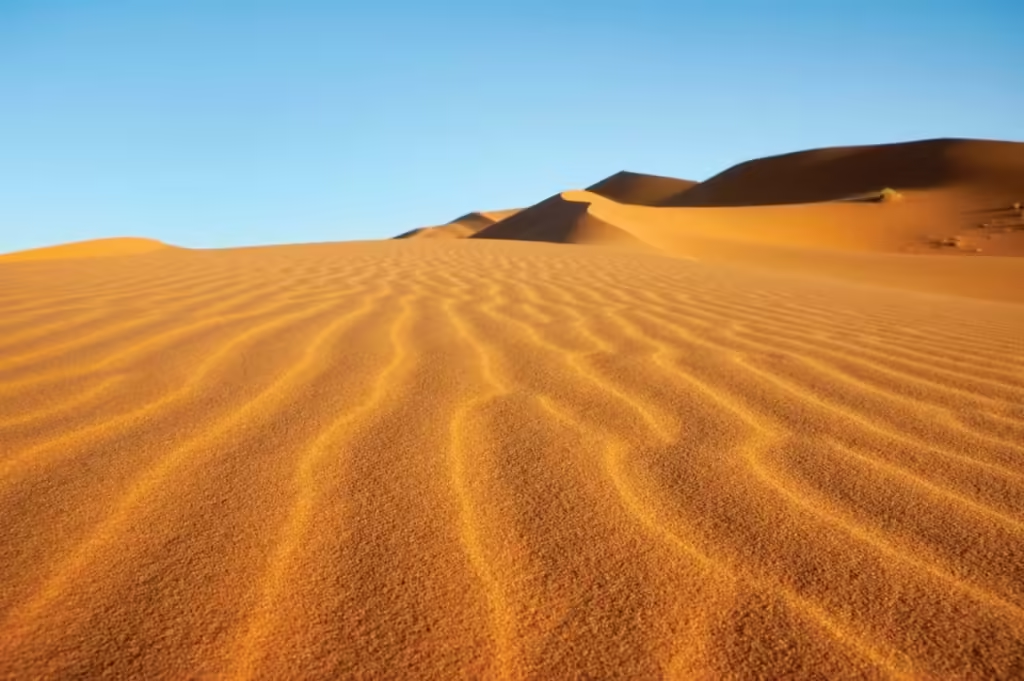
Initiatives for Desert Ecosystem Conservation
There is much initiative taken in the desert environments towards planting, water resources regulation, and habitat protection. In the African context, for example, an African scheme called the Great Green Wall has been proposed to stop the arid expansion of the desert by planting a massive strip of trees.
The Importance of Sustainable Living in Desert Land
Deserts are populated and make living sustainable. That can include solar energy, water usage, and the recovery of the native plant species and animal species, so in case of adverse environmental conditions, deserts endure.

Conclusion
Deserts are majesty, where time freezes still or runs backward, unveiling the difficult sides of nature, as it nakedly unravels its beauty. From ancient civilizations thrived on the periphery of deserts to today’s desertification, and all other implications of climate change, many more things are yet to be said about these arid lands and how they continue to feature in the Earth’s narrative.
The mysteries of the desert are still far from fully uncovered. Whether the lost history lies beneath the sands or future innovations might be inspired by deserts, one thing is for sure: deserts will always capture the human imagination time and again, reminding a person of nature’s power and resilience.
FAQs
Why Are Deserts Important to Earth’s Ecosystem?
Deserts moderate the Earth’s temperature and harbor distinct communities. They also determine climate worldwide.
Can Deserts Be Saved for Agriculture?
Although some deserts can be domesticated with irrigation, it is too resource-intensive, which means it cannot be maintained.
How Do Humans Manage in Such Severe Desert Conditions?
Desert people rely on a deep understanding of the land, water-conserving practices, and suitable garb such as flowing clothes to avoid being scorched by the heat.
What is desertification the biggest threat to the desert ecosystem today?
Climate change, overgrazing, deforestation, and urbanization are the biggest threats, causing desertification and biodiversity loss .
Are There Any Desert Regions That Have Not Been Explored Yet?
Mostly, most deserts have been mapped. However, large parts of the Sahara and Antarctica remain unexplored at all and hold secrets yet to be discovered




